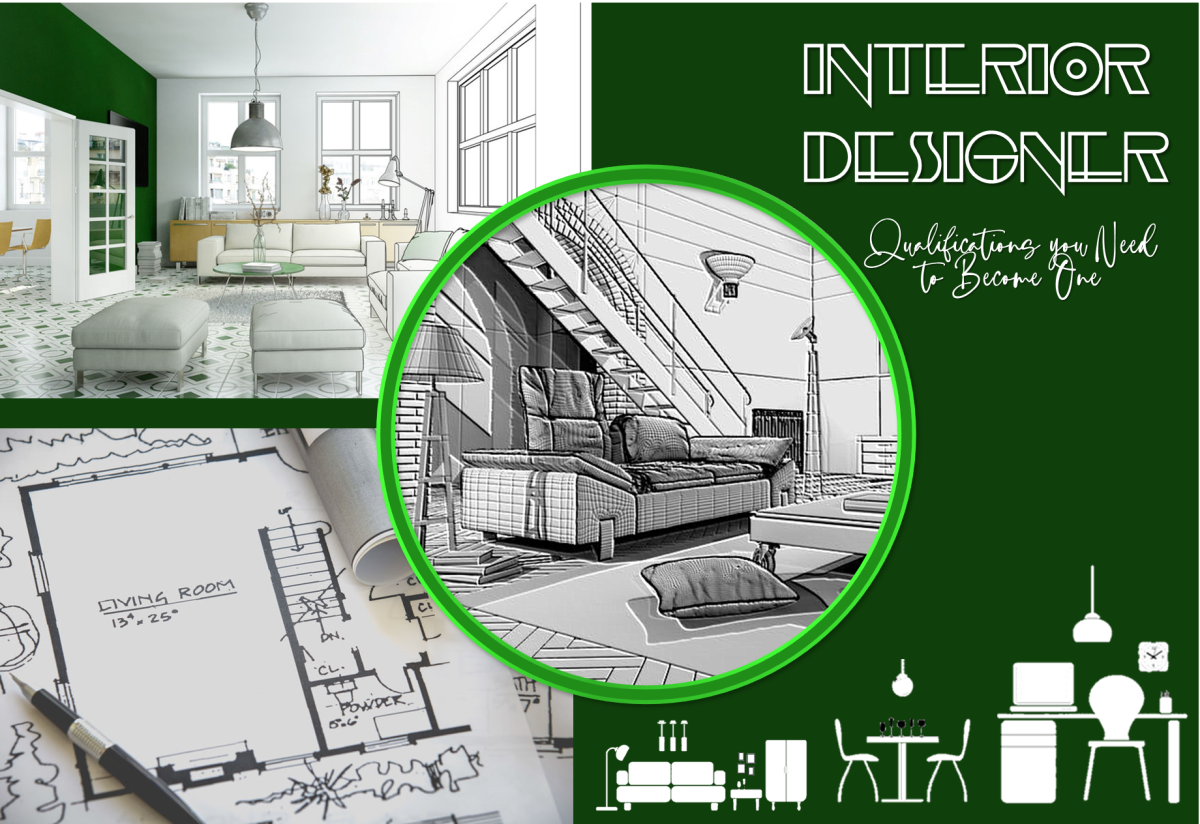Some people have a knack for design. If you find decorating rooms and arranging furniture easy and fun, a career in interior design might be right for you. But before you start dreaming of room makeovers, consider first how to become an interior designer.
Things you should know about becoming an interior designer
1. Recognize the distinction between designers and decorators.
The primary distinction between interior decorators and interior designers, to put it simply, is education. In the modern world, anyone who enjoys experimenting with colours, fabrics, and textiles can work as a decorator by simply printing business cards and approaching potential customers. Even though it's not a bad route to take, getting a degree from an accredited institution, such as an associate's or bachelor's, is typically necessary to work in the interior design industry.
2. You must possess a natural aptitude and passion.
Although it may seem obvious, you need to have a natural talent for colour, space planning, architecture, and textiles in order to become an interior designer. Do you like to decorate your home and do you frequently receive compliments on it? Although it's not a guarantee that you should work as an interior designer, this is unquestionably a positive sign.
3. It's not all fun and fabric in interior design.
There are numerous other tasks that interior designers must complete, many of which seem less enjoyable and more like work, despite the fact that fabrics, furniture, and colour may play a significant role in interior design. In addition to working with homeowners, interior designers also collaborate with builders, architects, governmental organizations, and entrepreneurs. They must therefore receive education in a variety of subjects, including the history of design, building structural integrity, building codes, ergonomics, spatial concepts, ethics, psychology, and computer-aided drawing (CAD).
"People's misunderstanding of what my job as a designer entails is the most annoying aspect of my job. Most people assume that all day long I just mix fabrics and colours. They are unaware of all the work that is done behind the scenes once the vision has been developed, according to interior designer Vanessa DeLeon.
4. Despite what you might believe, the pay is not as high.
Getting into design because you believe it to be very lucrative? Wait a minute. According to statistics, an entry-level interior designer in the United States makes a median annual salary of $49,012. Of course, the range could be on the higher end or even on the lower end depending on factors like education, location, work experience, and company size.
5. Determine your sector fit
For example, an interior designer employed by a furniture company will probably earn less money yearly than a designer employed by a prestigious architectural firm or who owns their own firm. But do not fret. Just take every opportunity to learn and grow. And remember: Anyone who learns about architecture, building regulations, and structural design may be able to earn more money.
6. You have to like people
If you ask interior designers about their experiences, most will share stories about previous clients, including both positive and negative ones. People have high standards, especially for their homes. Good listeners, interior designers assist clients in realising their ideas and visions. To make those ideas a reality, you must be able to listen attentively and work with a variety of people.
I deal with clients, vendors, late deliveries, floor plans, elevations, drafting, and measurements of tiles, rugs, counter tops, wall paper, etc. because I am involved in the project management aspect of the design, according to DeLeon. "After the design concept is developed, my job doesn't end."
7. Develop your flexibility.
While some clients have specific objectives in mind, others might believe they know what they want before changing their minds in the midst of the project and being unhappy with your work. A good interior designer will be outgoing, a people-pleaser, and a mitigatory—someone who can guide clients toward desirable results while making them feel fully in control of the design decisions.
8. Create a portfolio.
You can talk about colours and fabrics all day long, but unless you have a strong portfolio that features your designs and projects, your chances of success are slim. brand-new to the workforce? To develop a strong portfolio and demonstrate that others trust your work, you might want to think about providing your services for no charge or at a discounted rate. It's a great way to build relationships with suppliers and merchandisers in preparation for future projects.
9. Become aggressive
The interior design industry is highly competitive. Getting noticed is one of the keys to success. A strong portfolio is where it all begins. Education is a further important factor. You will be better off the more you know. Future trends like population expansion, designing for the elderly, contemporary architecture, and green design should be taken into consideration. Your advantage in the job market will come from having training in these particular design fields. Reading design magazines and websites, connecting with other designers, and finding a mentor are all good ways to stay on top of trends.
10. Discover brand-new online opportunities
The ability to work virtually is made possible by technological advancements like Skype, Zoom, and other essential design software, which are used by many other professionals in our global economy. Although the general public has access to a number of free virtual room design tools online, interior designers have an advantage over their rivals because of their exclusive connections with premium design lines. Designers in the industry are given discounts by a number of upscale textile manufacturers, enabling them to negotiate the best prices for their clients.
DsignDpo India's Most Trusted Home Interior Design & Renovation Service Company. Get Expert Interior Designers to Create the Most Beautiful Living Rooms, Dining Rooms, Bedrooms, Bathrooms & More, be it New Home Interiors or Renovation. Book a Free Consultation with an Expert Interior Designer.
Also Read: What does an interior designer do?
Happy Reading!



.jpg)
0 Comments